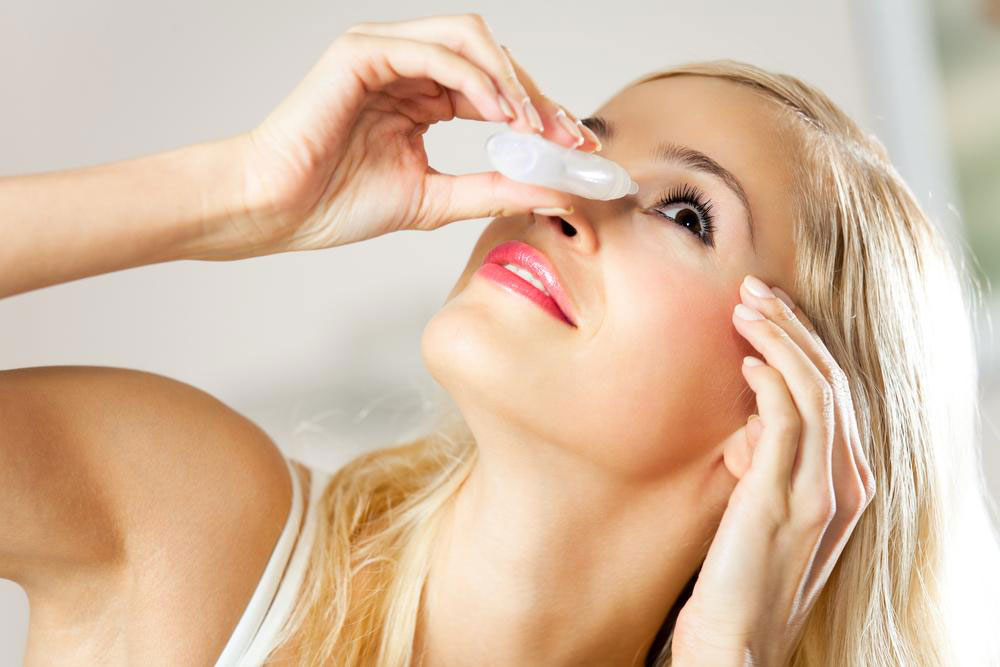
Dry Eye Symptoms and Ways to Treat Them
Dry eye syndrome is a common health condition attributed to inadequate lubrication of eyes. It can happen either due to insufficient production of tears or low-quality tears. Dry eyes are very uncomfortable and cause a burning sensation in the eyes. Generally, dry eyes develop due to uninterrupted working on computer screens, sitting in air-conditioned rooms for longer durations, or while long driving. Here is a closer look at dry eye symptoms and treatment options.
Prevalence
According to one estimate, millions of people in the country suffer from dry eyes. Moreover, it increases with increasing age, and women are more prone to develop dry eyes compared to men.
Causes of dry eyes
Several factors lead to dry eyes. A few are listed below:
- Use of medications such as antihistamines, birth control pills, and hormone replacement therapy
- Dry eyes are more prevalent in people aged above 50
- Vitamin A and vitamin B 12 deficiency, diabetes, and thyroid disorders are also linked with dry eyes
- Insufficient blinking, allergies, and autoimmune disorders
- Chronic conjunctivitis
Symptoms of dry eyes
Common dry eye symptoms are:
- Red eyes and burning sensations and eye fatigue
- Blurred vision and light sensitivity
- Difficulty in driving
- A problem in wearing lenses
Ways to treat dry eyes
Use of lubricants
Mild dry eye symptoms due to excessive use of computer or reading can be treated with artificial tears or lubricant eye drops. Other options are the use of gels and/or lubricants after consultation with a doctor.
Lifestyle changes
Take periodic breaks while working on a computer screen. Blinking eyes frequently and closing them for a few minutes while using a smartphone or any digital device may also help in reducing the symptoms of dry eye. This allows basal tears to spread uniformly across the eye. In case of long driving, wear proper sunglasses which covers the eyes completely thus protects your eyes from dust particles and warm air. Sunglasses also blocks UV rays, which can worsen the dry eye symptoms.
Take breaks while working
There is a “20-20-20 rule” to reduce the dry eye symptoms and eye strain. While working on a screen, take a break after every 20 minutes and focus on an object which is 20 feet away for 20 seconds.
Medications
Medications must be used only after consulting an eye specialist. A few commonly prescribed medications to treat dry eye symptoms are cyclosporine and liftigrast. Corticosteroid eye drops are also prescribed to reduce inflammation.
Artificial devices
Some devices stimulate the tear glands and cause tear production. However, this is a temporary relief measure.
Completely remove eye makeup
Commonly used eyeliners and other eye makeup block the Meibomian gland openings which cause abnormal gland function, and ultimately leads to dry eyes. To prevent this, eye makeup must be cleaned thoroughly.
Clean your eyes before sleep
Cleaning eyes before bedtime helps in removing infectious bacteria. This will reduce the chances of Meibomian gland infection.
Nutritional interventions
It has been reported that nutritional supplements containing omega-3-fatty acids reduce cases of dry eye. Omega-3 fatty acids can be obtained from salmon fish, sardines and flaxseed oil. Moreover, drinking sufficient water prevents dehydration which is known to worsen the dry eye.
Vitamin D supplements
Vitamin D deficiency leads to dry eyes. Vitamin D supplements reduce eye inflammation and promote tear secretion.
Home remedies
The following home remedies for treating dry eye symptoms must be used only after consulting a doctor:
- Castor oil
One or two drops of 100% pure organic castor oil can be put into eyes. Castor oil is an excellent lubricant and possesses anti-inflammatory properties due to the presence of ricinoleic acid. - Coconut oil
Pure coconut oil drops can be put into eyes to provide lubrication. The presence of fatty acids such as lauric acid and capric acid make coconut oil an excellent lubricant and anti-inflammatory oil. - Yogurt
It is a rich source of vitamin D and vitamin B. These vitamins reduce dry eye symptoms. - Aloe Vera
It possesses anti-inflammatory and healing properties and prevents free radical damage to eyes owing to its potent anti-oxidant properties. - Olive oil
It is rich in linoleic acid and oleic acid, which provides excellent lubricating properties to it. It is also a rich source of anti-oxidant and anti-inflammatory molecules. - Fish supplements
Fish oil is rich in omega-3-fatty acid, which prevents dry eye symptoms. - Honey
Honey is a great moisturizer and lubricant. Additionally, it possesses antiseptic and anti-inflammatory properties. Honey drops are already being used for the treatment of several ocular problems.
The prevalence of dry eyes has increased recently as more and more people are spending time on digital screens. However, the development of dry eyes is attributed to both lifestyle and nutritional factors. Several lifestyle and dietary interventions can be adapted to reduce the incidence and severity of dry eye symptoms.


